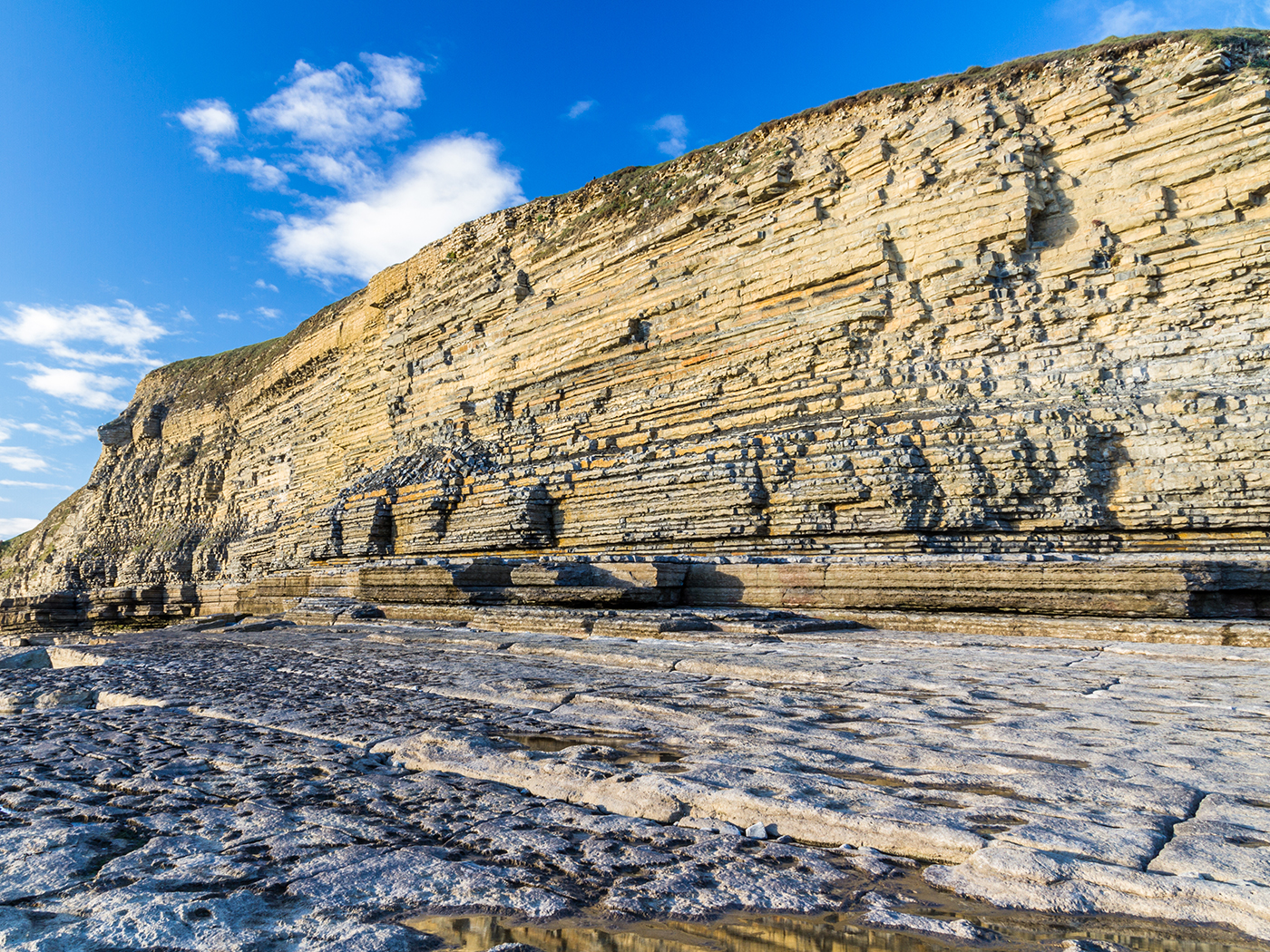Since the 1990s, cross-section images of mantle tomography have shown visible slabs of oceanic lithosphere (which includes oceanic crust) descending hundreds of miles beneath ocean trenches into subduction zones.1 These descending plates have been imaged all the way down to the top of the earth’s outer core2 and are composed of cold, brittle, dense rock about 62 miles thick.
Researchers from the University of Colorado recently reported finding that some of the subducted slabs stagnate at depths of about 670 km (416 mi) to 1000 km (620 mi) and appear to travel horizontally.3
Publishing in Nature Geoscience, Wei Mao and his co-author, Shijie Zhong, present seismic tomography that show descending plates beneath the Honshu and northern Mariana subduction zones in the western Pacific. The plates stop in the mantle transition zone and move horizontally for more than 1500 km (930 mi) to the west beneath East Asia.3
 Their research goal was to determine why some slabs extend to the core while others stop descending partway through the mantle and move horizontally.
Their research goal was to determine why some slabs extend to the core while others stop descending partway through the mantle and move horizontally.
Mao and Zhong concluded that a mineral phase change from increasing temperatures and pressure in the mantle transition zone is likely responsible, stating,
We demonstrate that the observed stagnant slabs in the transition zone and other slab structures in the lower mantle can be explained by the presence of a thin, weak layer at the phase change boundary that was suggested by mineral physics and geoid modelling studies.3
The authors added that these stagnant plates seem to be a recent phenomenon, all occurring within the last 20-30 million years. But if these subducted slabs are really many millions of years old, why do they still show such prominent temperature anomalies?
All of the images of the subducted slabs show consistently cooler rock surrounded by extremely hot mantle, even after traveling more than 1500 km (930 mi) right through the mantle itself.3 These rock slabs appear to be at least a thousand degrees Celsius cooler than the surrounding mantle material at these depths, based on their density.4
And a bigger problem was never addressed in this paper. How do the cold slabs that extend down to the base of the mantle (at the core boundary) remain cold after 30-50 million years or more, at the sluggish subduction rates secular scientists envision? These lithosphere slabs had to travel 2,900 km (1,800 mi) to reach the base of the mantle where the temperature is even hotter, about 3,500 degrees Celsius—over 6,300 degrees Fahrenheit.
These cold lithospheric slabs indicate they were rapidly emplaced just thousands of years ago. ![]()
The cooler temperatures exhibited by the subducted slabs create a thermal dilemma for secular and old-earth geologists, who must explain how these slabs remained cold for tens of millions of years. Instead, these cold lithospheric slabs indicate they were rapidly emplaced just thousands of years ago.
Cold subducted slabs are best explained by runaway subduction. The catastrophic plate tectonic model suggests subduction during the Flood year occurred rapidly, with plates moving at rates of meters per second—several miles per hour.2 These fast speeds could easily place long slabs of cold lithosphere deep within the hot mantle as we observe today. Since the slabs have only been within the mantle for a few thousand years, they are still much cooler than the surrounding mantle. Today’s measured slow plate speeds are what was “left over” after runaway subduction ended.
If these lithospheric slabs, and those at the base of the mantle, were really moving as slowly as secular scientists claim at just a few centimeters per year, then the slabs should have warmed up and assimilated long ago and not show such strong density contrasts—indicating a much-cooler temperature—with the surrounding hot mantle.
Dr. Jake Hebert aptly summarized the findings from mantle tomography:4
An imaging process called seismic tomography has revealed a ring of dense rock at the bottom of the mantle. Since its location corresponds approximately to the perimeter of the Pacific Ocean, it appears to represent subducted ocean crust (Figure 2). Located inside this ring of cold rock is a blob of less-dense rock that appears to have been squeezed upward toward the crust. If one assumes that the density of the cold ring is comparable to that of the surrounding material, which is the most straightforward assumption, this ring is 3,000 to 4,000 °C colder than the inner blob. This is completely unexpected in the conventional plate tectonic model since it can take about 100 million years for a slab to descend all the way to the base of the mantle. In that time, one would expect any such temperature differences to have evened out. However, in the catastrophic plate tectonics model, such a temperature difference is to be expected if the slab rapidly subducted into the mantle just a few thousand years ago.2
Mantle tomography showing blobs of cold subducted rock confirm the research findings of creation scientists, validating runaway subduction.5
Mantle tomography showing blobs of cold subducted rock confirm the research findings of creation scientists, validating runaway subduction. ![]()
Rapid plate motion only occurred during the Flood year about 4,300 years ago. Once the original colder oceanic lithosphere was completely consumed by subduction and a new hotter seafloor was produced, the runaway subduction process ceased. Today, we witness only residual plate motion. Seismic tomography images showing cold subducted plates deep in the mantle remind us that these events took place in the timeframe of the Bible.
References
1. Grand, S. P. et al. 1997. Global tomography: a snapshot of convection in the Earth. GSA Today.7:1-7.
2. Baumgardner, J. R. 2003. Catastrophic Plate Tectonics: The Physics Behind the Genesis Flood. In Proceedings of the Fifth International Conference on Creationism. R. L. Ivey, Jr., ed. Pittsburgh, PA: Creation Science Fellowship, 113-126.
3. Mao, W. and S. Zhong. 2018. Slab stagnation due to a reduced viscosity layer beneath the mantle transition zone. Nature Geoscience. DOI: 10.1038/s41561-018-0225-2.
4. Hebert, J. 2017. The Flood, Catastrophic Plate Tectonics, and Earth History. Acts & Facts. 46(8): 11-13.
5. Baumgardner, J. 1994. Runaway Subduction as the Driving Mechanism for the Genesis Flood. In Proceedings of the Third International Conference on Creationism. R. Walsh, ed. Pittsburgh, PA: Creation Science Fellowship Inc., 63-75.
*Dr. Timothy Clarey is Research Associate is at ICR. He has a doctorate in geology from Western Michigan University.
Article posted on November 8, 2018.















